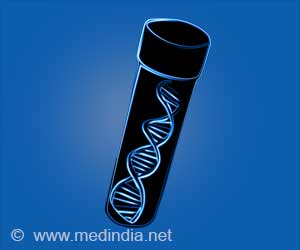The new biomarker has been found to be very effective in distinguishing benign and malignant lung cancer; they have found to be 98 percent effective.

‘When blood samples of suspected lung cancer patients were tested for LG3BP and C163A using a biomarker, integrated with clinical predictors of cancer, such as age, size of the nodule and other nodule characteristics, they found that LG3BP and C163A, biomarkers effectively distinguished benign nodules from malignant ones with 98 percent accuracy.’





Patients with high-risk nodules may require more invasive testing such as biopsy or even surgery to remove the nodule. However, when there's a low-to-moderate probability of cancer -- anywhere from 5 to 65 percent -- providers may debate who should be monitored with a serial PET or CT scans and who should undergo potentially complex diagnostic tests.Gerard A. Silvestri, M.D., M.S., a lung cancer pulmonologist at the MUSC Hollings Cancer Center who holds the George C. and Margaret M. Hillenbrand Endowed Chair in thoracic oncology, led the study. Results were reported in an article published online in the journal Chest on March 1, 2018.
The biomarker works like this: If a patient has less than a 50 percent chance of having cancer and the test result is negative for the integrated classifier, it's likely not cancer. The biomarker can offer the provider confidence in a diagnosis and treatment plan.
"It serves as a 'rule out' test for those with low-to-moderate risk," says Silvestri. "The biomarker is a tool to help calculate the general risk of cancer and present a patient with recommendations and options. It can push people out of indeterminate risk and into low-risk -- without having to undergo invasive and potentially risky procedures."
Biopsies and surgeries can be complicated in an organ as delicate as the lung.
Advertisement
Even if biomarker results are negative, patients will need ongoing CT scans to monitor a lung nodule. "A low-risk tumor will be followed with serial imaging. After two years of CT scans being performed periodically and without evidence of growth, we can say it's benign," Silvestri says.
Advertisement
If the biomarker's results in the PANOPTIC study had been used to direct care (they were not), 40 percent fewer procedures would have been performed on patients with benign nodules. The next step in bringing this test to the clinic would be to conduct a "clinical utility" study to show how using this biomarker might affect physician and patient behavior.
"Anything to provide physicians with more confidence in how they would manage patients would be helpful," Silvestri says. "The goal of this research, and other research like this, is to quickly evaluate and treat patients with cancerous nodules, while never exposing patients who don't have cancer to invasive costly and sometimes risky procedures."
Source-Eurekalert















